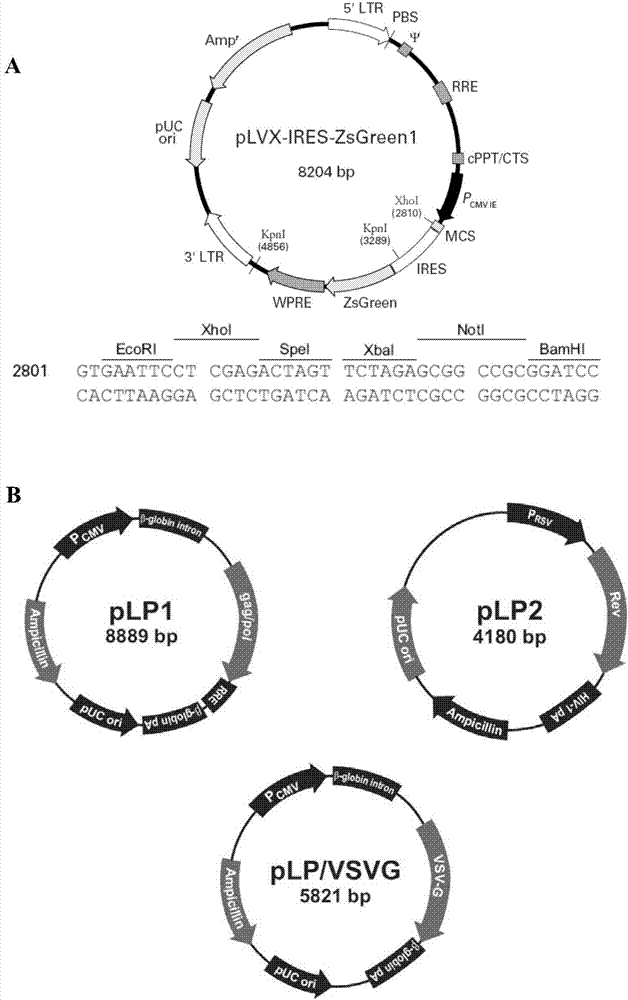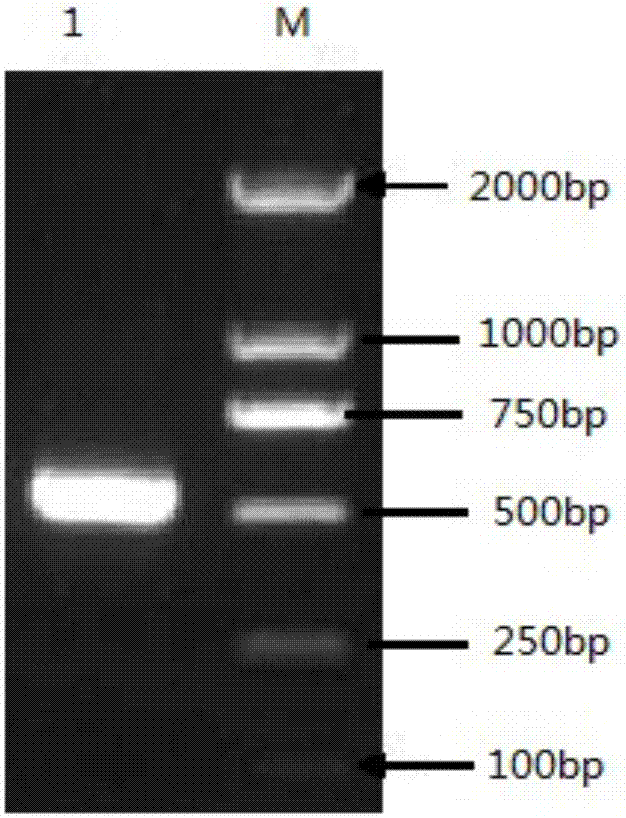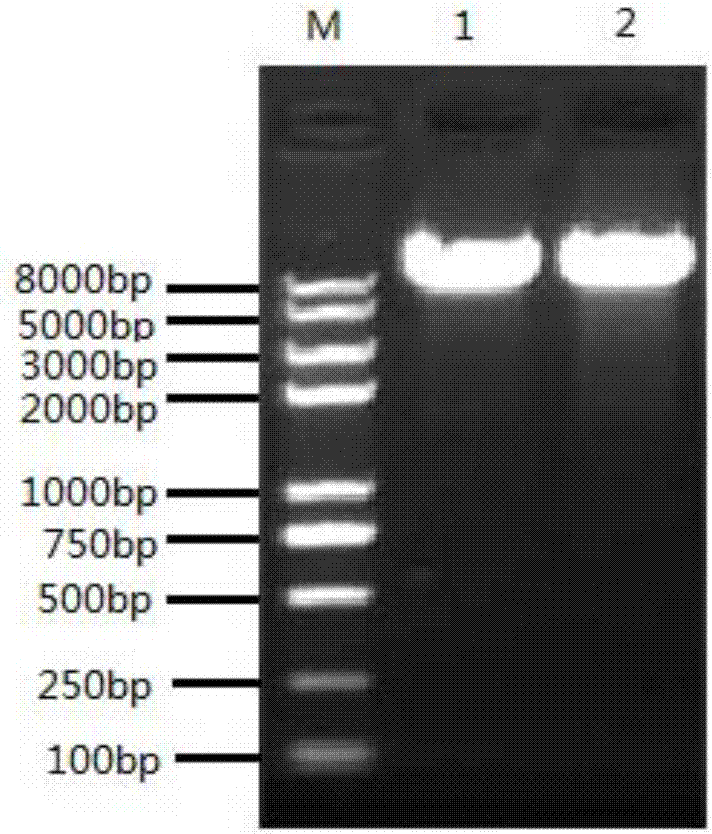Lentiviral vector capable of efficiently expressing mouse gonadotropin-inhibitory hormone genes and application of lentiviral vector
A gonadotropin, lentiviral vector technology, applied in the field of molecular biology, can solve problems such as unreported
- Summary
- Abstract
- Description
- Claims
- Application Information
AI Technical Summary
Problems solved by technology
Method used
Image
Examples
Embodiment 1
[0031] Example 1 Amplification of GnIH in Mouse Ovary Granulosa Cells
[0032] 1. According to the TRIzoL Reagent kit of Invitrogen Company, the RNA of mouse ovarian granulosa cells was extracted (mouse gonadotropin-inhibiting hormone (GnIH), Gene Bank accession number NM021892), and the equipment used was soaked overnight in 0.1% DEPC water, Autoclave. The test tubes used were RNA-free EP tubes. The collected cells were dissolved with Trizol, extracted with chloroform and precipitated with isopropanol, and then RNA was dissolved with 0.1% DEPC water, and the first strand of cDNA was synthesized using this as a template;
[0033] 2. Using the first strand of cDNA synthesized above as a template, carry out PCR amplification with upstream and downstream primers containing BamH I and EcoR I restriction sites, upstream primer: CCGGAATTCATGGAAATTATTTCATTAAAACGATTC (SEQ ID NO: 1), downstream primer: CGCGGATCCCCTATTTTTCTGGTTTCCTTTCTGC ( SEQ ID NO: 2), PCR amplification was performed...
Embodiment 2
[0034] Example 2 Construction of pLV-GnIH lentiviral expression vector
[0035] 1. Enzyme digestion reaction. Reaction system: EcoR I and BamH I double digestion PCR product. EcoR I and BamH I double digestion figure 1 pLVX-IRES-ZsGreen1 shown in A, enzyme digestion system: 10×Buffer 2μL, BamH I 1μL, EcoR I 1μL, pLVX-IRES-ZsGreen1 plasmid 5μL, supplemented with ddH 2 0 to 20 μL. The reaction conditions were 1 h at 37°C, followed by 1% agarose gel electrophoresis ( image 3 ). The digested product was recovered with a DNA purification and recovery kit and stored at -20°C.
[0036]2. Ligation reaction. Reaction system: 10×Buffer 1 μL, linearized pLVX-IRES-ZsGreen1 plasmid 2 μL, GnIH fragment 2 μL, T4 DNA ligase 1 μL, supplemented with ddH 2 0 to 10 μL. The reaction condition was 16°C for overnight ligation to obtain the recombinant pLVX-GnIH-IRES-ZsGreen1 plasmid.
[0037] 3. Transformation and identification of positive clones. The recombinant plasmid was transformed ...
Embodiment 3
[0040] Sequencing verification of positive clones: select positive clones and send them to Nanjing GenScript Biotechnology Co., Ltd. for sequencing. For the sequencing results, see Figure 6 , Blast was used for homology analysis, and the successfully constructed lentiviral plasmid was named pLV-GnIH (pLVX-GnIH was constructed by inserting the GnIH sequence into the pLVX-IRES-ZsGreen1 plasmid). Embodiment 3 lentivirus packaging and titer determination
[0041] 1. Prepare 293FT cells. 293FT cells in logarithmic growth phase were digested with 0.25% trypsin, and the cell density was adjusted to 10 with medium containing 10% serum 7 Each cell was re-seeded in a 10cm cell culture dish, cultured in a 37°C, 5% CO2 incubator, and could be used for transfection when the confluence of the cells reached 70-80%.
[0042] 2. Cell transfection was carried out according to the instructions of the LipofectamineTM 2000 kit.
[0043] 2 hours before transfection, replace with fresh medium. ...
PUM
 Login to View More
Login to View More Abstract
Description
Claims
Application Information
 Login to View More
Login to View More - R&D Engineer
- R&D Manager
- IP Professional
- Industry Leading Data Capabilities
- Powerful AI technology
- Patent DNA Extraction
Browse by: Latest US Patents, China's latest patents, Technical Efficacy Thesaurus, Application Domain, Technology Topic, Popular Technical Reports.
© 2024 PatSnap. All rights reserved.Legal|Privacy policy|Modern Slavery Act Transparency Statement|Sitemap|About US| Contact US: help@patsnap.com










